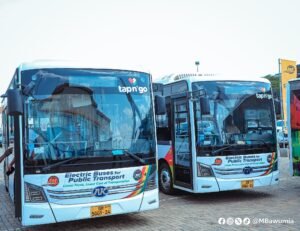
The Minister of Railways Development-designate, John Peter Amewu, says his predecessor, Joe Ghartey, did marvellously well as far as the development of the railway sector in Ghana is concerned.
According to Mr Amewu, his predecessor and his team at the Railways Development Ministry “laid a solid foundation” for the sector.
He made the commendation when he appeared before Parliament’s Appointments Committee on Wednesday during his vetting as Minister-designate for Railways Development.
Ability to deliver
Mr Amewu, a former Energy Minister and Member of Parliament for the Hohoe constituency in the Volta Region, assured the lawmakers and the entire country that he would continue where his predecessor left off.
Mr Ghartey had earlier wished Mr Amewu well, expressing profound confidence in his ability to succeed when he is finally given the nod.
Under Mr Ghartey’s stewardship, Ghana’s railway sector, which was virtually dead, was resurrected.
Prior to his appointment, many of the tracks in existence were those built during colonial times. For instance, the Accra-Nsawam rail line was developed around 1910-1912.
He rebuilt the entire railway network across Ghana, moving the country away from its colonial narrow gauge tracks to modern standard gauge rail lines, and then bring in modern trains as well as rehabilitated the 30km Accra-Tema, 33km Achimota-Nsawam, and 56km Kojokrom-Tarkwa rail lines.
Deals
Among the several deals signed was that involving a consortium of Chinese companies, led by Dongfang Electrical, in partnership with CRRC Dalian and the CRRC Qiqihar Rolling Stock Company (QRRS), for the supply of passenger locomotives and rolling stocks to Ghana.
The deal with the Chinese consortium, worth $243.6 million, was for the supply of nine passenger locomotives capable of speeds of 160km/h, 15 freight locomotives and 11 shunters.
In addition, Dongfang will supply 48 passenger coaches, 230 box wagons and 100 flat wagons and the first batch of two locomotives is scheduled for delivery by June 2021, with a further seven by the end of the same year.
The existing 1,067mm gauge colonial-era network had suffered from underinvestment and neglect in recent decades, declining from a peak of 947km in 1957 to around 10 percent of that figure when Mr Ghartey took over.
Source: dailystatesman.com.gh








